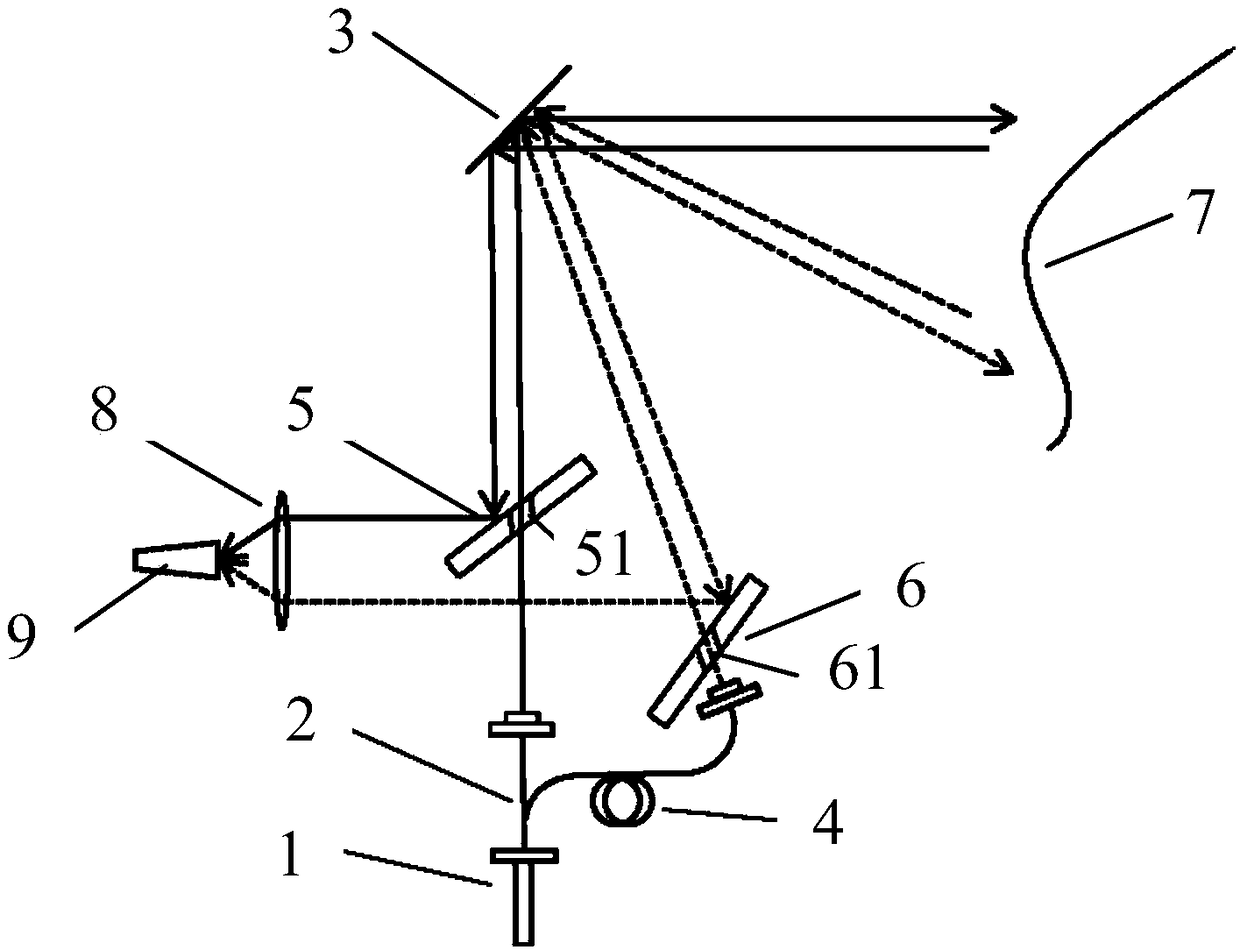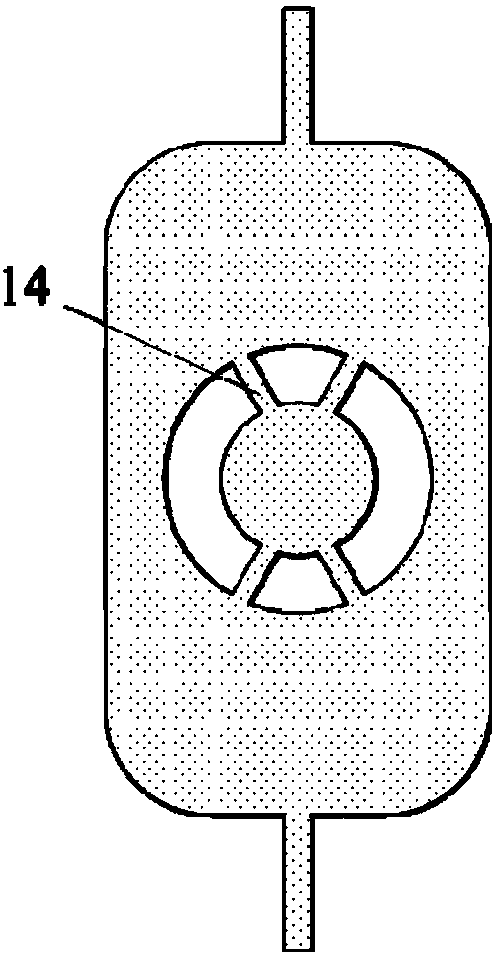Micromirror-based time division shared window laser radar system
A laser radar and micromirror technology, applied in the field of time-division shared window laser radar system, can solve the problems of increasing system size and cost, complex receiving optical path, and difficulty in applying portable devices
- Summary
- Abstract
- Description
- Claims
- Application Information
AI Technical Summary
Problems solved by technology
Method used
Image
Examples
Embodiment 1
[0028] Such as figure 1 As shown, the present invention provides a time-division shared window lidar system based on a micromirror, comprising: a laser 1, an optical fiber beam splitter 2, a first single-sided mirror 5, a micromirror 3, and a second single-sided mirror 6 , Converging lens 8, photodetector 9 and delay fiber 4.
[0029] A first through hole is opened on the first one-way reflector 5; a second through hole is opened on the second one-way reflector 6;
[0030] The laser beam generated by the laser 1 is divided into two paths by the optical fiber beam splitter 2, and one path of the laser beam is emitted to the micromirror 3 through the first through hole, and then emitted to the detection target through the micromirror 3 7. The other laser beam is emitted to the second single-sided mirror 6 after passing through the time-delay optical fiber 4, and is emitted to the micromirror 3 through the second through hole, and is emitted to the detection target 7 through the...
Embodiment 2
[0051] In the lidar system described in Embodiment 1, the micromirror 3 is an important optical relay component and scanning device in the optical path. On the one hand, the size of the reflection surface of the micromirror 3 defines the maximum reflection area; on the other hand, the micromirror 3 realizes the scanning of the light beam based on its own scanning structure.
[0052] Further, the micromirror 3 is a dynamically deformable micromirror.
[0053] In the present embodiment two, the basic structure of the mirror surface of the micromirror 3 is as follows: figure 2 As shown, it includes an outer mirror 10 and an inner mirror 11. The inner mirror 11 is connected to the outer mirror 10 via a connecting mechanism 12, and the outer mirror 10 is connected to an external fixed anchor point through a torsion shaft 13. The outer mirror 10, the inner mirror 11 and the connection mechanism 12 form a whole to rotate around the rotation axis, and the connection mechanism 12 is ...
Embodiment 3
[0057] exist figure 2 A structure of the micromirror 3 is shown in , in which the inner mirror 11 is rotated about the axis of rotation. During the rotation and oscillation process, the natural rotational frequency of the micromirror as a whole is determined by the total moment of inertia of the micromirror and the stiffness coefficient of the torsion axis 13 . Therefore, by adjusting the shape and size of the connecting mechanism 12, the overall rotation frequency of the micromirror is much lower than the natural frequency of the vibrator formed by the connecting mechanism 12 and the inner mirror 11. The size of the connecting mechanism 12 can be adjusted by adjusting the first width ( H1 ) and the first distance ( L1 ), and the shape of the connecting mechanism 12 can be formed by changing the etched pattern.
[0058] exist image 3 In the micromirror structure shown, four arc-shaped grooves are etched on the same circumference on the SOI with the center of the inner mirr...
PUM
 Login to View More
Login to View More Abstract
Description
Claims
Application Information
 Login to View More
Login to View More - R&D
- Intellectual Property
- Life Sciences
- Materials
- Tech Scout
- Unparalleled Data Quality
- Higher Quality Content
- 60% Fewer Hallucinations
Browse by: Latest US Patents, China's latest patents, Technical Efficacy Thesaurus, Application Domain, Technology Topic, Popular Technical Reports.
© 2025 PatSnap. All rights reserved.Legal|Privacy policy|Modern Slavery Act Transparency Statement|Sitemap|About US| Contact US: help@patsnap.com



